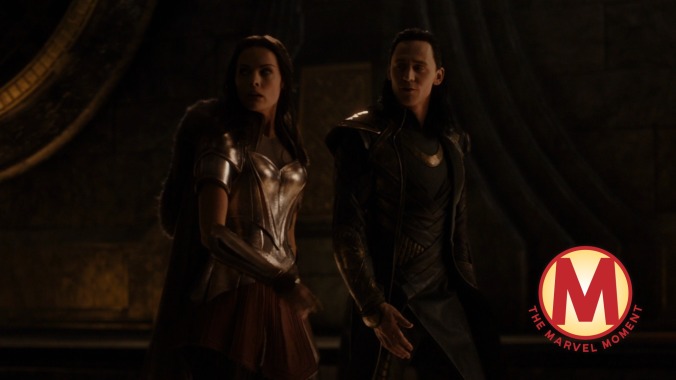Loki’s shape-shifting role in the MCU became literal in Thor: The Dark World


Thank Odin for Loki. And thank him, too, for Tom Hiddleston, the British actor who turned the fourth most important role in the least-anticipated Marvel film into one of the series’ most fascinating, malleable characters. Yes, Loki definitely died in the grip of Thanos’ big, purple hand, but he’s returning for his own prequel on Disney+, one that will intersect the trickster with key events in human history. Marvel’s even done a bit of retconning in advance of the series, explaining away the character’s more villainous tendencies—like, say, trying to enslave the human race in The Avengers—by explaining that he was influenced by an evil Scepter that was “fueling his hatred over his brother Thor and the inhabitants of Earth.”
That’s lame. It’s lame because it’s unnecessary. Yes, the Marvel Cinematic Universe is a binary one where the good guys are good and the bad guys bad. But Loki resonates because, against all precedent, he managed to be both. For all his shifting allegiances—he winks at the audience in Ragnarok, saying they vary from “moment to moment”—the character is remarkably consistent in terms of his wants and weaknesses. He wants power, yes, but that desire stems from his own familial insecurities, which, time and again, serve to fuel both his villainous and redemptive moments. He wants to be selfish, to rule from the throne his father denies him, but his love for Thor and Asgard can’t help but draw him back to their side. So while Earth and civilization might be nothing more than land to conquer to Loki, his family remains a leash around his heart.
Thor: The Dark World isn’t anyone’s favorite Marvel movie, but it finds a clever way to reintegrate Loki into the MCU after he played the big bad in The Avengers. Confined to a cell, his powers neutralized, he watches on helplessly as Malekith and the Dark Elves terrorize his homeland. After realizing his adopted mother, Frigga (Rene Russo), has been killed, he channels his grief into a mental bomb, one that lays waste to his cell’s furnishings in a single swoop. Later, he uses his powers to mask his physical collapse, projecting a tidy, refined version of himself into the world. That’s some relatable shit right there.
Still, The Dark World remains a by-the-numbers affair, driven down by a forgettable villain—Dark Elf Malekith is even lamer than the first Thor’s frosty Laufey—and a boilerplate love affair that again wastes Natalie Portman. There’s signs of what was to come with the kaleidoscopic Ragnarok, though. Just look at the shapeshifting scene in which Thor frees Loki from his cell in an effort to safely travel to Svartalfheim. With their feud in the past, the brothers are free to bounce off of each other in fresh ways, with Chris Hemsworth’s penchant for straight-faced comedy amplifying Loki’s puckish smarm. Nobody sitting through Marvel’s first phase would’ve expected these two to one day anchor an honest-to-goodness action-comedy, but to watch their easy rapport here is to understand why What We Do In The Shadows director Taika Waititi came to mind as they were plotting a third outing.
The above scene also serves as its own kind of metaphor—Loki, after all, shifts shapes in more ways than one, his character being one of the few non-Avengers to evolve, in performance and function, with the MCU. He’s been a villain and a hero, a comic and a martyr, and a genuine wild card in a series built on binaries. What’s great, though, is how both Hiddleston and the MCU have managed to keep Loki’s mischievousness intact until the very end. He never really became a good guy and, canon be damned, no scepter is going to change that.
GET A.V.CLUB RIGHT IN YOUR INBOX
Pop culture obsessives writing for the pop culture obsessed.